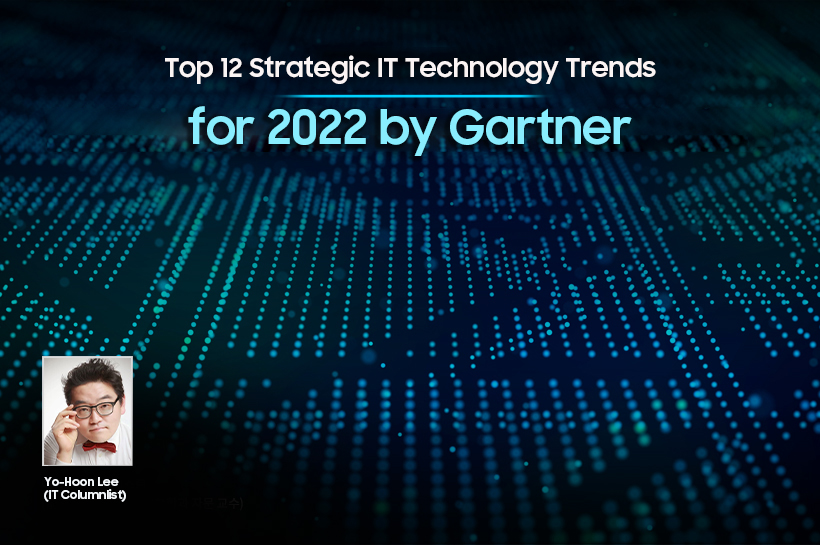
On October 18, 2021, the IT research and advisory service firm Gartner published its ‘Top Strategic Technology Trends for 2022.’ The annual report introduces important technology trends forecast to emerge within the next three to five years.
Samsung OLED is considered a technological upgrade in terms of color reproduction range, contrast ratio, and response time, but did you know that it’s also built with your eye health in mind? Find out more about how Samsung’s OLED display protects your eyes against strain and fatigue.
The 2022 report introduces 12 trends, with each of three more significant themes — engineering trust, accelerating growth and sculpting — exploring four trends. While the trends in the latest report are similar to what was included in last year’s report, the 2022 report sets itself apart by focusing on businesses’ growth rather than on responding to crises. The latest report also added three more trends to nine of the preceding report, and the 12 trends will be outlined in the rest of this article.
[1] Theme: Accelerating Growth
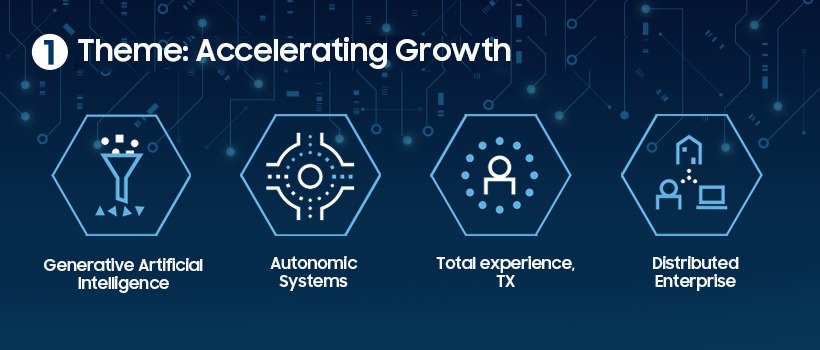
① Generative Artificial Intelligence
Generative artificial intelligence (AI) allows users to request AI to create something, according to which it generates the output. A great case in point is AI DALL·E, which was revealed by OpenAI and generated images. When the text that reads a pentagonal green clock’ is entered, DALL·E generates an image of a green clock in the shape of a pentagon. In addition, even when a phrase contains irrelevant words such as ‘chocolate and ice cream holding hands,’ various versions of an image that fits the description are generated.
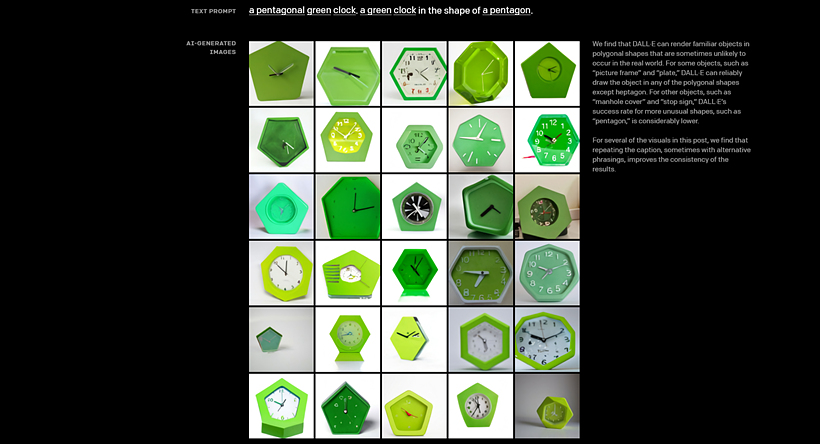
(Source: OpenAI)
What are the applications for generative AI technology, then? We already have an AI service that generates background music according to the user’s request. Jarvis.ai, an AI service offered by the marketing service company Proof, provides marketing copies for blogs and social media upon the customer’s request. The Financial Conduct Authority (FCA) of the United Kingdom generated new virtual transaction details based on five million pieces of actual transaction data to conduct research for detecting fraud.
Generative AI is still at a nascent stage where it generates merely decent content, but the possibilities for its application in the future are infinite. One downside, however, is the possibility of the technology being taken advantage of for harmful acts such as malicious deepfake videos. Gartner predicts that by 2025, data generated by AI will account for 10% of all data produced (while the number currently stands at below 1%).
② Autonomic Systems

As companies grow, they reach a point where the traditional manual management system can no longer accommodate business tasks. This is when automatic systems are required. Automatic systems are self-managing systems that work in accordance with their environment. Without external software updates, automatic systems leverage their algorithms to adjust quickly to the changes.
For instance, a 5G telecommunications base station uses AI to adjust the direction and angle of the antennas. In certain products, AI tracks the position of the sun to adjust the movement of the solar PV modules. The technology is used predominantly in security environments. But going forwards, it is highly likely to be adopted in physical systems such as robots.
③ Total Experience, or TX
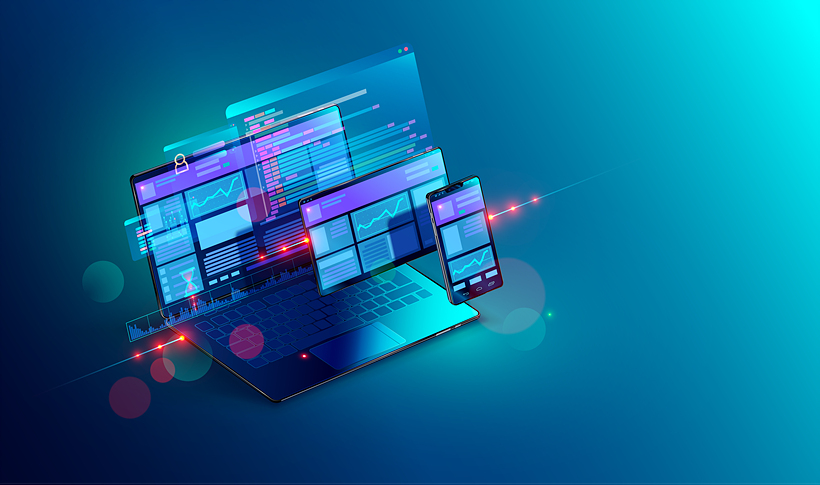
Total experience is a business strategy that combines employee experience, customer experience, user experience, and multi experience. It aims to drive greater customer and employee confidence, satisfaction, and loyalty. In fact, customers access a service through various devices and channels and experience diverse forms of the service. Can customers enjoy the same service optimized for each channel and device?
Individual experience through each device and channel should drive up customer satisfaction instead of lowering it. For example, can customers enjoy a great total experience when they can access a quote only via a PC but not on a smartphone? What about a metaverse service that can only enjoy via a smartphone or a VR headset but not on a PC screen? Would this be considered a good metaverse service?
④ Distributed Enterprise
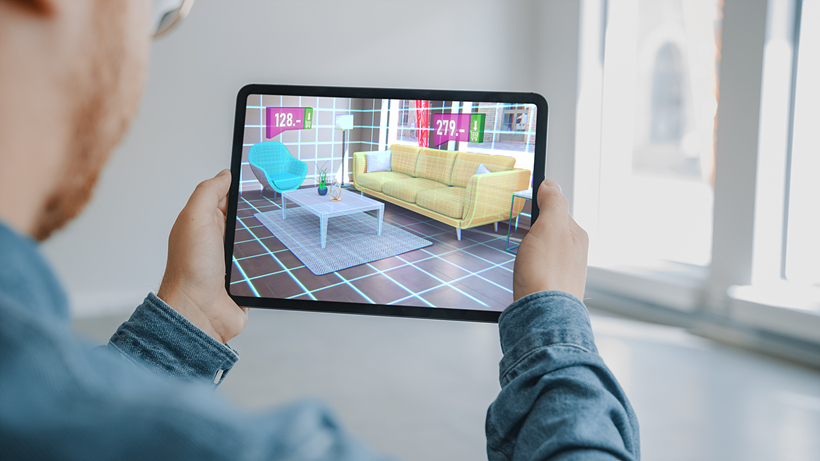
With remote and hybrid working widely accepted as the new norm, many businesses are transforming into distributed enterprises consisting of talent working in various locations. Such change requires technologies and services that can support remote work. In the same way that delivery has been established as the default mode of using food and beverages services instead of merely being offered as an option, businesses, in general, have started adopting hybrid business models. Great examples of this change include virtual dressing rooms or make-up and metaverse Christmas markets. Now, a perspective shift is needed to prioritize the virtual and remote business model rather than treating it as a temporary arrangement.
[2] Theme: Sculpting Change
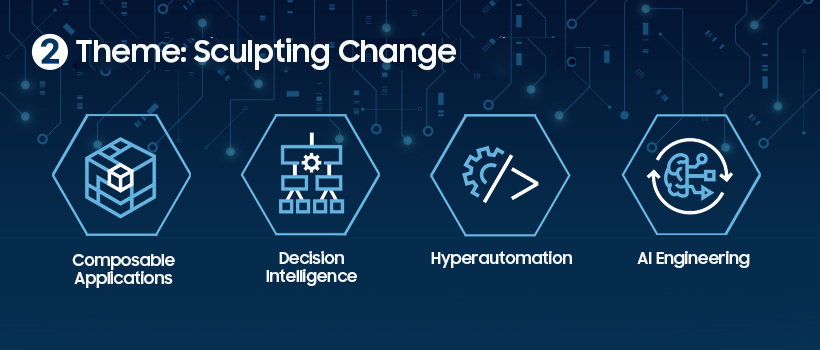
⑤ Composable Applications
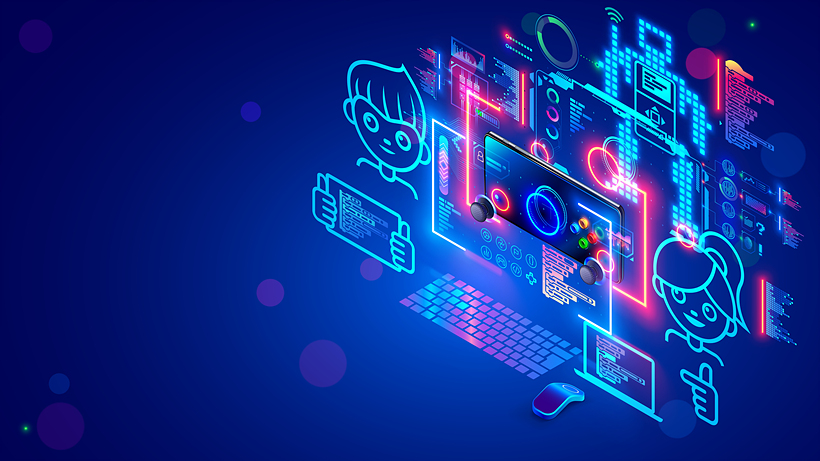
Businesses must adapt to changes fast in today’s constantly changing business landscape. Composable applications are what businesses need for that purpose. Composable applications are next-generation applications that are scalable when required and can easily modify the functionalities as they are built from modular components. Composable applications eliminate the need for developing new apps and allow businesses to make modifications quickly whenever the need arises to respond to the changing environment.
Imagine what it would be like to create or modify applications in a way that is tailored to the needs of your team. This can be achieved, in fact, by low-code development — a way of developing applications ‘without having much knowledge of coding.’ Another alternative would be using a low-code platform such as ‘Airtable.’ In May 2021, for instance, Microsoft released its low-code language called ‘Power FX,’ which allows the development of apps using verbal language.
⑥ Decision Intelligence

Thriving in a fast-changing environment requires quick decision-making. However, the fast speed of change increases the number of factors to consider, making it more demanding to make decisions swiftly. Decision intelligence supports the decision-making of an organization through independently selecting and processing a set of tasks in accordance with the situation.
Decision intelligence, in another sense, is a process of making a decision based on data. An AI system analyzes a tremendous amount of data in real time and makes predictions based on the analyzed data. The projections generated by AI can serve as the foundation for more objective and faster decision-making. Gartner predicts that more than a third of large corporations will utilize decision intelligence in the next two years.
⑦ Hyperautomation

Hyperautomation refers to automating as many business and IT processes as possible. It is also about automating “everything that can and must be automated,” as Gartner’s vice president Brian Burke once mentioned. This can improve the quality of work, drive digital businesses, and make decision-making more agile. Of course, it is not easy — it requires keeping a large number of technical tools and platforms used by various teams in harmony and coordinating between them. Through the process, any legacies of the past that are not optimized must be decisively eliminated.
⑧ AI Engineering

Over the last few years, Gartner has repeatedly cited one key strategic technology trend. It suggests that this particular trend is an essential ongoing change. Still, it also implies that companies have been struggling with the rise of this trend — it is none other than projects for integrating artificial intelligence within applications. Everyone is aware of the importance of AI, but AI projects often fail or end up achieving few tangible outcomes, even when they succeed.
Nonetheless, AI has the potential to bring a business to another level. AI engineering is a process and a tool for a methodology that designs, builds, tests, distributes, operates, and advances a reliable AI system to tap into this potential fully. In other words, it is a technology that continuously enhances the value of AI solutions by automating updates to data, AI models, and applications.
[3] Engineering Trust
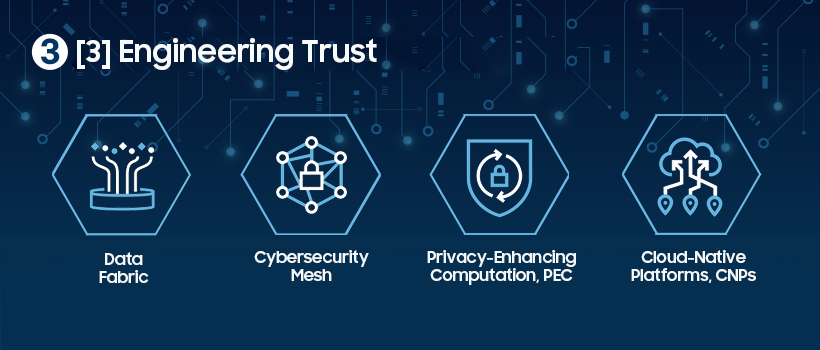
⑨ Data Fabric

Data fabric is a design concept that involves a variety of data management technologies to support uninterrupted data access and sharing in a distributed network environment. It helps integrate all data sources into a single scalable platform so that the data can be monitored and managed regardless of where it is stored. Data fabric is not only about managing the data that has been accumulated over time, but it is also about collecting data to be accumulated in the future. In particular, this technology improves the usability of data and reduces data management efforts by up to 70%.
⑩ Cybersecurity Mesh

How can security be ensured in an environment where remote work has normalized? The answer is cybersecurity mesh. Cybersecurity mesh helps people safely access the data owned by their company, even in independent and distributed computing environments, by defining the security perimeters centered around the user or identity. Digital assets and users of today are dispersed everywhere, and in other words, physical security exists externally. A cybersecurity mesh architecture (CSMA) provides an integrated security structure and safeguards digital assets. Gartner predicts that an organizational use of a CSMA can reduce the financial impact of individual security incidents by an average of 90% by 2024.
⑪ Privacy-Enhancing Computation, or PEC

Privacy-enhancing computation can be summarized by three characteristics.
First, it provides a reliable environment where critical data can be processed and analyzed. Second, it processes and analyzes data in a distributed manner. Third, it encrypts data and algorithms before analyzing or processing data. This technology was introduced due to the increasing need for sharing data without compromising the security of personal information. As more consumers are increasingly concerned about protecting their personal information, failure to protect the privacy of customers will ruin the customers’ trust in a company. Gartner predicts that 60% of large corporations will adopt one or more privacy-enhancing computation techniques by 2025.
⑫ Cloud-Native Platforms, or CNPs
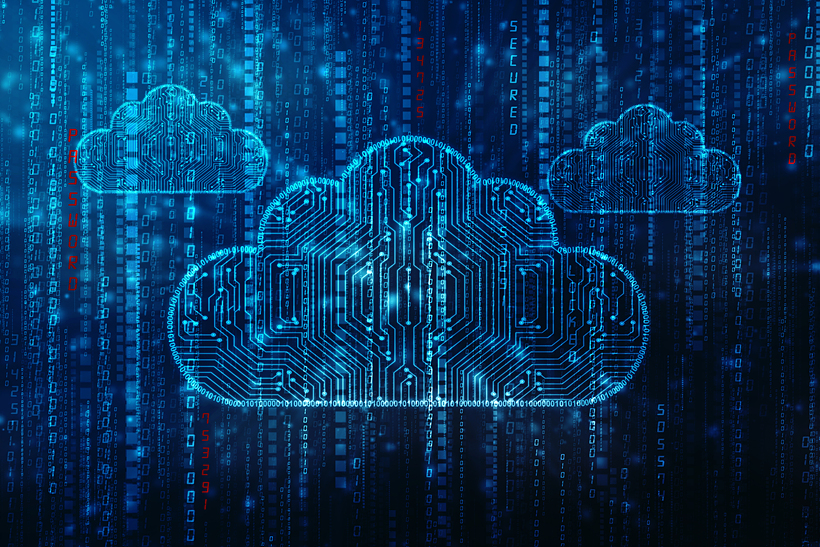
Some of the companies that are migrating to cloud platforms barely change the existing data or code. While it is obviously a way to save time and money, it entails limitations. Gartner says that cloud-native platforms are the way to fully leverage the power of cloud computing and provide excellent customer service. Cloud-native platforms enable the provision of platform services and infrastructure that are highly scalable and elastic by using the core capabilities of cloud computing. This is possible because cloud-native platforms do not involve modifying the existing applications, but they use technologies and products that are cloud-native by default — in the same way, and you would furnish your new home with brand-new furniture and throw away the old one.
※This article holds the author's opinions and does not reflect the stance nor strategies of Samsung Display Newsroom.

